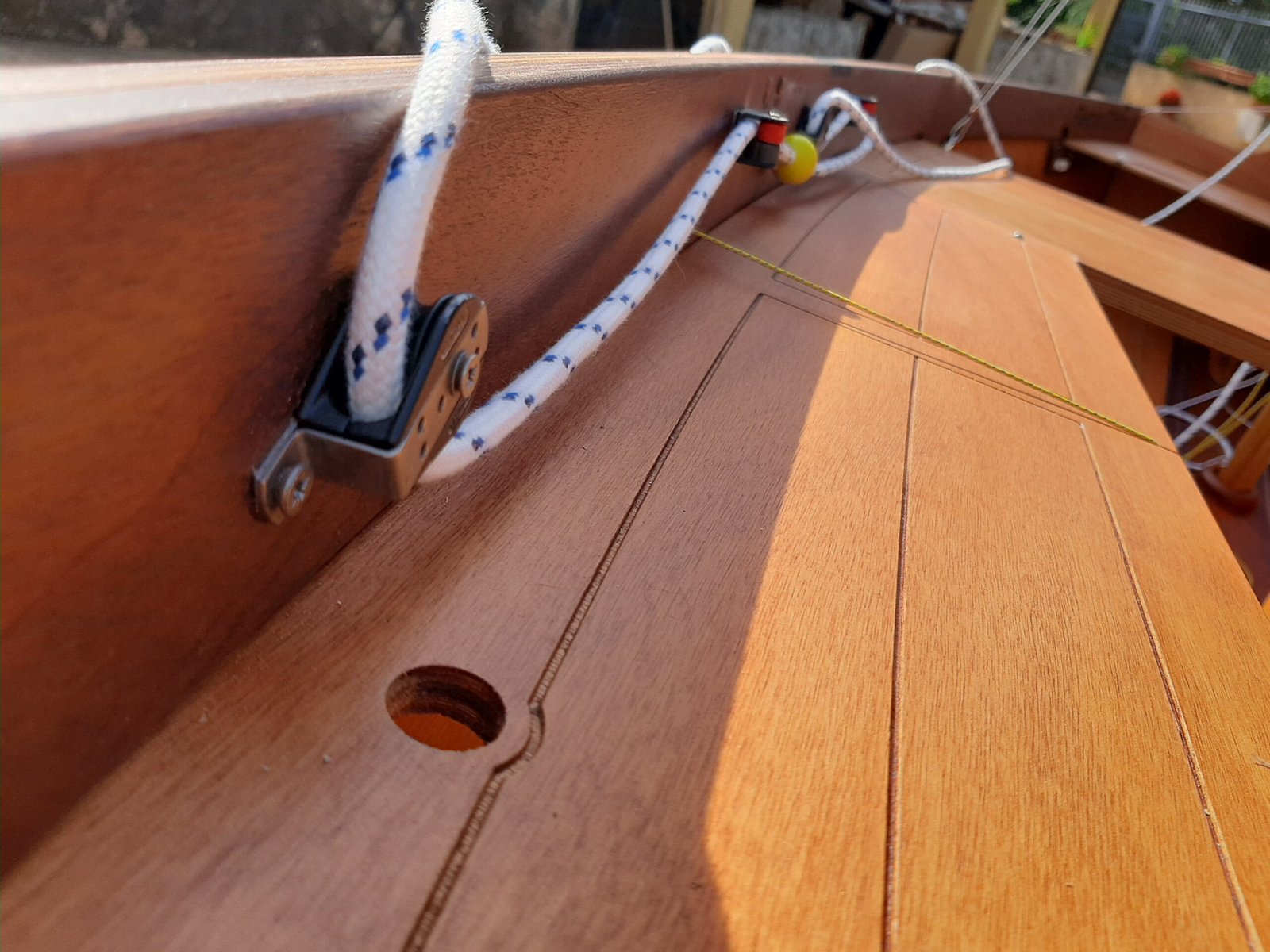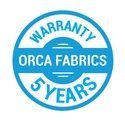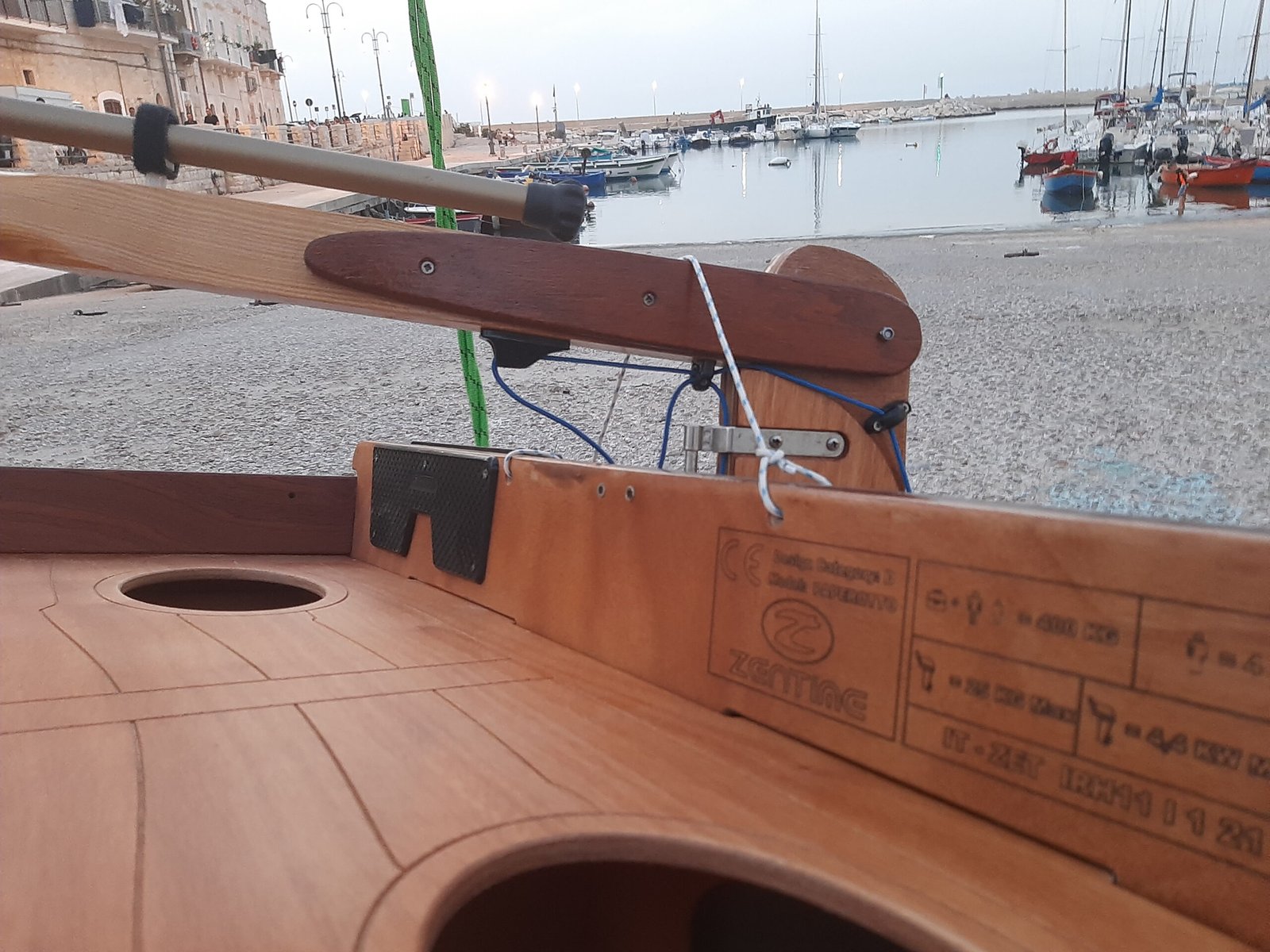Here nothing is trivial: find out the whys and wherefores. If you don’t find all the answers to your curiosities here, fill out the contact form at the bottom of the page: it will be wonderful to talk together about the sea, sailing and P8.

Actually, these days the choice of wood is rather unique, in fact this is the most recurring question. The choice of an expensive raw material such as wood has been meditated on for a long time. But it was also the natural, emotional and indispensable decision. So let’s see why the wooden P8, a rare choice for a unique boat.
Technical considerations and the memory effect
The wood was chosen above all for technical reasons, in order to ensure high structural rigidity of the hull during navigation. A feature that is not at all obvious in a folding boat and which distinguishes the P8 from all the other folding/demountable/inflatable boats on the market. This rigidity is ensured by the curvature of the panels generated during the opening phase of the hull. The deformation obtained, thanks to the elastic properties of the wood, is transformed into a very powerful compression action, impossible to obtain with any other material. If instead we had used fiberglass, carbon or other composites, the torsions would have caused permanent deformations with serious repercussions on the decrease in rigidity of the hull over time. For this reason the P8 is able to sail as if it were a normal non-foldable boat. Thus the absolute superiority of wood was affirmed, which with its extraordinary mechanical characteristics makes it possible to build solid, light boats with incomparable resistance to fatigue. But there is an even more important aspect: what happens to a P8 that has been kept mounted for many months? Absolutely nothing: the memory effect of wood is very powerful. In a few minutes it will be as flat as a sole, ready to be placed in its beautiful burgundy bag! what happens to a P8 that has been kept mounted for long months? Absolutely nothing: the memory effect of wood is very powerful. In a few minutes it will be as flat as a sole, ready to be placed in its beautiful burgundy bag! what happens to a P8 that has been kept mounted for long months? Absolutely nothing: the memory effect of wood is very powerful. In a few minutes it will be as flat as a sole, ready to be placed in its beautiful burgundy bag!
Security considerations
Wood is a natural buoyancy reserve. Thanks to the very low specific weight of the wooden hull (1/4 compared to fiberglass, about 0.48), the P8 is the safest boat you can sail on. This is because boats made of different materials, if broken through and with flooded watertight boxes (e.g. impact with sharp rocks), sink miserably.
aesthetic considerations
All objects built with natural materials are given a particular value and this is even more true for wood. But the highest dimension of this perception is expressed in the use of wood for boats. Lucid and alive, she vibrates and whispers softly to her crew. Sailing on a violin of the sea is a special experience. This is the emotion that we at ZenTime passionately dedicate to our customers.
Ecological considerations
Wood is the most renewable material that exists. No matter how much you try to mistreat it, ruin it, break it, it will always come back as new. Your P8 is as eternal as a phoenix. There are no weaknesses inherent in his design. No compromise in design to follow aberrant concepts of planned obsolescence. With the right care, if you give it the minimum amount of attention it needs, your P8 can regenerate itself and be handed down from generation to generation. What happens to the old fiberglass boats instead? Disposed of as special waste at a cost of around €2.5/kg, plus fixed charges and transport.

Obviously we are talking about exclusive motor use, because a rubber dinghy will never be able to sail with dignity by rowing or sailing. RIBs are just good motor boats. But for the purchase of a rubber dinghy with a capacity of 400 kg (like the p8) it will also be necessary to calculate the following higher costs (many of which are fixed and independent of the hours of actual use).
- Marine engine: choice of a higher power model, proportional to the greater weight of the boat.
- Road trolley: purchase, road tax, periodic testing and insurance.
- Car: purchase, installation and test tow hook.
- Insurance: trolley static risk policy + car liability insurance supplement for tow hitch.
- Toll surcharge: traveling with a trailer on ferries (+120%) and motorways (+40%).
- Fuel consumption surcharge: traveling with a trailer (+30%).
- Storage charges.
- Maintenance costs surcharge.
- Scrapping costs for fiberglass disposal at the end of the life cycle (about €2.50/Kg).
Do the math well and evaluate all budget items carefully before making your choice. And remember: the purchase of a boat includes a statistically very high percentage of regrets.
The P8 has the same hull lines as its non-folding ancestor Dinghy Mirror, an English project from 1962. Developed for the Sailing School in the North Sea, the qualities of this boat have made it appreciated and spread in tens of thousands of specimens all over the world. Even in countries where the sea is the ocean, such as Australia, Canada, South Africa, New Zealand.
The “mirror bow” was a solution dear to Anglo-Saxon designers of that period and was adopted for many models. Among these the most famous was the Optimist (Clark’s 1956 project). Do you know which boat has been chosen by World Sailing to introduce young sailors from all over the world to competitive sport? The stainless Optimist, which still resists, still the same, after 60 years, to race anywhere, in spectacular events of the highest level, even in the ocean.
These are indisputable references. The mirror bow works and does not fear any sea. For this reason the P8 will show you its marine qualities precisely with accentuated wave motion, to the full advantage of safety.







The P8 employs a patented gasket-based folding locking system. They are made in Hypalon by ORCA® , world leader in the production of special fabrics for industry, nautical and aerospace. This material is used to make rafting boats, junction bellows for railway carriages, industrial bellows… This material is insensitive to time, resists practically everything and is virtually indestructible. The neoprene base used in Hypalon guarantees reliability and stability over time even in the face of prolonged exposure to UV rays and high temperatures. The scorching sun of a beach will do nothing against him.
On the P8 we subjected the hinges to a test of 5,000 opening/closing movements of the boat, corresponding to 50 years of normal use. The result shows that there is no alteration of the elastic modulus of the gasket, which always returns to its rest position.
But what exactly did we use it for? The seals on the boat have only the task of guaranteeing watertightness. All stresses are absorbed by the wooden structure, thanks to special frets that prevent slipping and expansion of the seals during navigation.
This is also why we proudly offer a 5-year guarantee for the p8 , the most extensive on the market. But you can rest assured even after that, because after 50 years the seals on the P8 will still be just perfect.
We at ZenTime abhor the concept of planned obsolescence, which is why we will never use cheap PVC, widely used by other shipyards.

The P8 is the project of a boat born to sail with optimal performance. However, its Dinghy hull also makes it perfectly usable to use oars / motor.
If we were to build amputee hulls of the elements necessary for sailing economically, we would be betraying its nature. We therefore prefer to guarantee all boats always the same possibilities. After all, your P8, sooner or later, under your command or that of someone else, will one day sail with full sails in the wind: shall we bet?

So when you arrive at the beach it will be inevitable to attract the attention and intrigue all the people passing by. We owe much of our affirmation to the pride of our customers, special people who contribute to the success of the P8 with their references.
If you don’t want to set trends… you don’t like making friends… you never want to talk to anyone… well, then, despite ourselves, we must advise you against buying a P8!
 The wood with which the P8 is built is FSC certified marine plywood approved by RINA, the best wood on the market for nautical use. This precious variety, treated with the high protection painting cycle to which it is subjected during processing, is selected for lasting immersion in water. With regard to maintenance, which as known is directly proportional to the time of exposure to sunlight, it does not depend on the material with which the boat is built. More time in the sun? More maintenance. The big advantage of the p8, compared to ordinary boats, is given by the effective ease with which it can be stored for many months a year away from the sun. The P8 consequently has very low maintenance requirements compared to any other boat.
The wood with which the P8 is built is FSC certified marine plywood approved by RINA, the best wood on the market for nautical use. This precious variety, treated with the high protection painting cycle to which it is subjected during processing, is selected for lasting immersion in water. With regard to maintenance, which as known is directly proportional to the time of exposure to sunlight, it does not depend on the material with which the boat is built. More time in the sun? More maintenance. The big advantage of the p8, compared to ordinary boats, is given by the effective ease with which it can be stored for many months a year away from the sun. The P8 consequently has very low maintenance requirements compared to any other boat.

